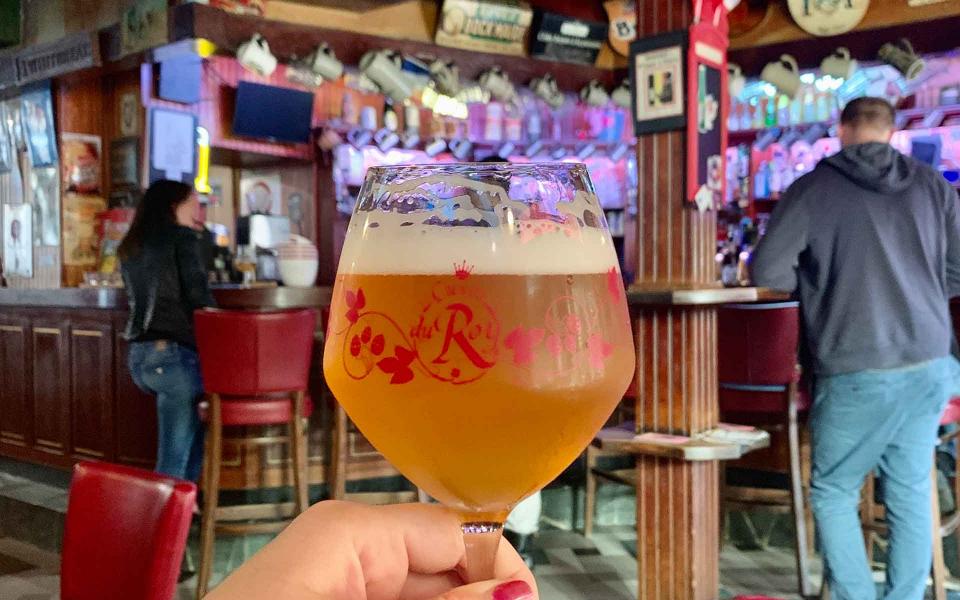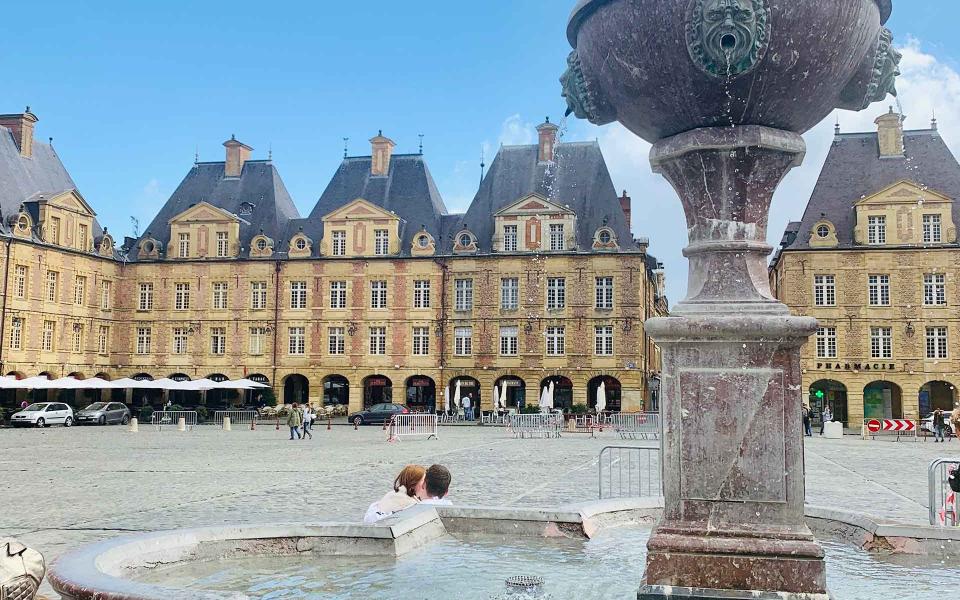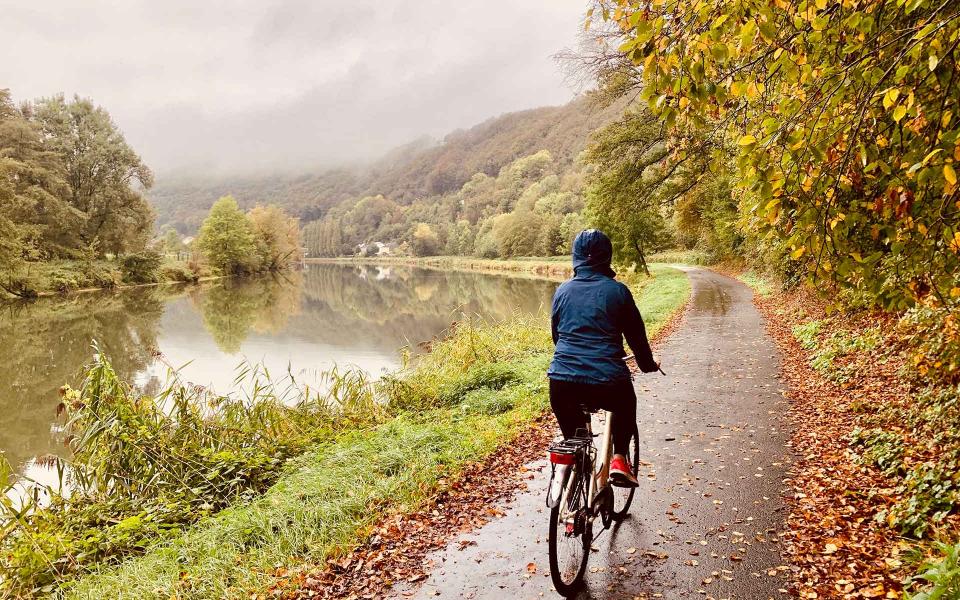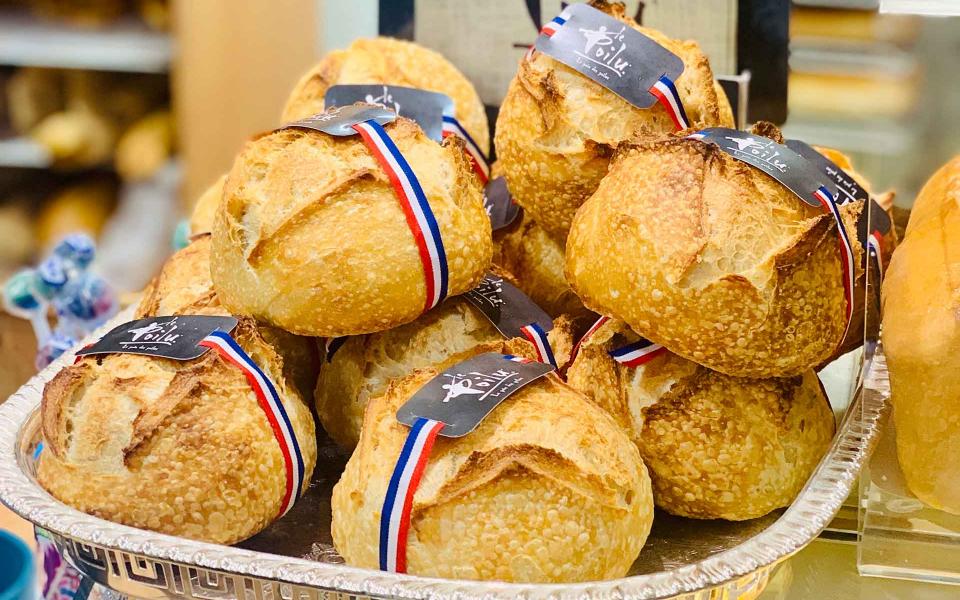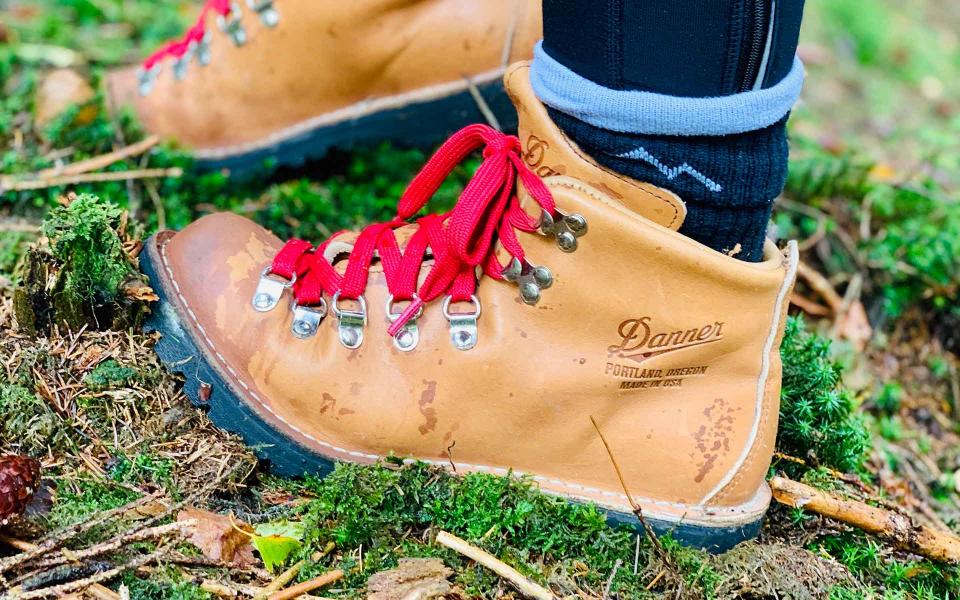10 things to see at The Museum of the Ardennes
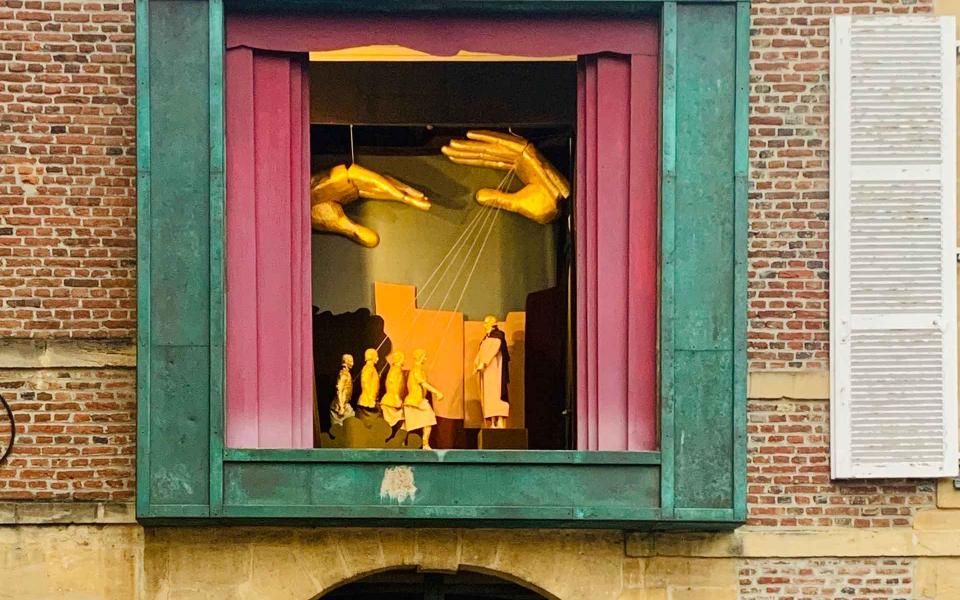
The Museum of the Ardennes is an absolute must visit on a trip to Charleville or the wider Ardennes region. Located in the corner of the Place Ducal the museum is filled with exhibits and artefacts that have been found in Charleville and from the wider Ardennes region.
The Museum of the Ardennes reflects life and culture in the area from prehistory to the city’s modern day relationship with puppetry. The museum houses over 3400m² of unique collections and is a one stop shop for everything you need to know about the history of the Ardennes region.
The museum building itself is a beautiful space, which has been thoughtfully extended to include a mix of modern and old architecture. They have seamlessly fitted together the classicism of the 17th century architecture with modern steel, glass and timber to extend the museum, providing space for their ever growing collection.
Modern artists have contributed a number of pieces to the museum, including sculptures and paintings featuring the “mascot” of the Ardenne, the wild boar.
The museum walks you through the history of the region, starting with prehistoric artefacts, through the industrial heritage of the region and into modern day Charleville with examples of puppets from around the world.
If you’re visiting the three story museum here are a few key things to look out for.
1. The Wild Boar
The Wild Boar is a symbol of the Ardennes region. If you arrive to Charleville by car, you might have spotted Woinic just off autoroute A34. In fact, it would be hard to miss Woinic, as he is a 30 foot wild boar! The wild boar is the symbol and spirit of the Ardennes, the subject of many legends and has inspired numerous artists, including the creator of Woinic, sculptor Eric Sléziak.
If you look closely, you will find a few wild boar around the museum, including a large painting in the entrance hall and a real one, along with other regional animals, on the modern stairway. This can also be seen from outside the museum through a large glass window.
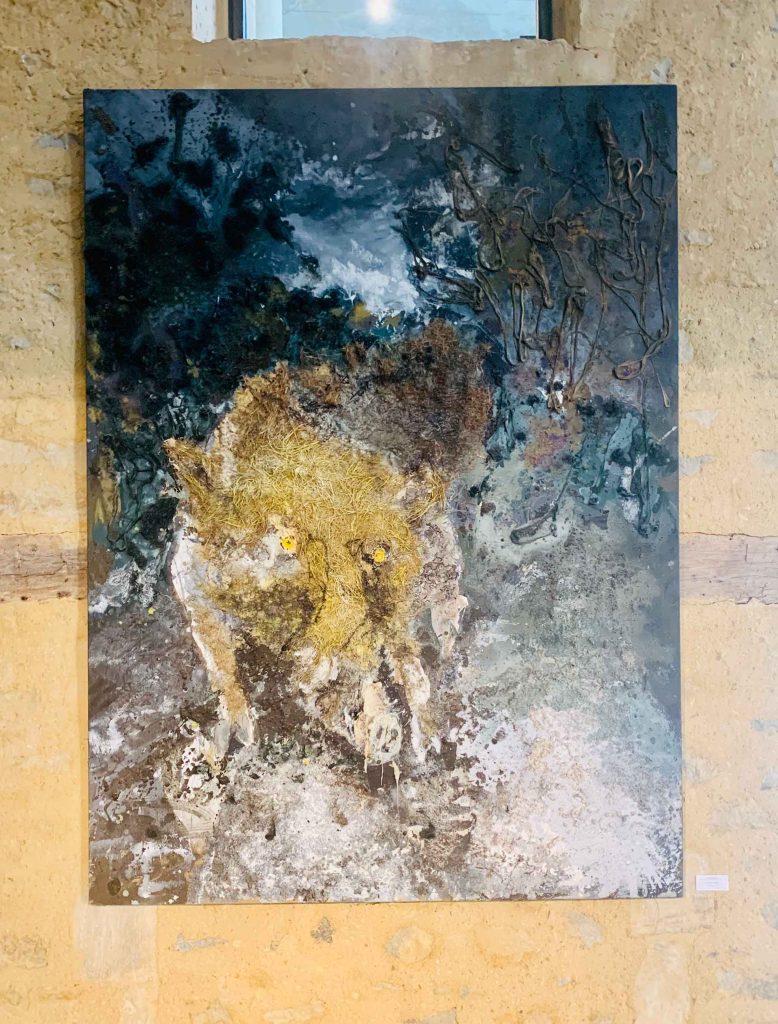
Painting representing a wild boar
2. Muskets from the Charleville armoury
Charleville was once one of the biggest producers of guns for the Royal Army and gives its name to the Charleville musket. You can see a vast collection of Charleville muskets and other firearms in the museum, ranging from basic army issue guns to very ornately decorated sporting models owned by aristocracy.
The muskets on display show incredible craftsmanship, and you perhaps don’t realise the work that goes into them until you get to see them close up. This is especially impressive given the age of these weapons and the technology available at the time.
Some of the Muskets made in Charleville made their way to America and were used in the American Revolutionary War. The large arsenal was later moved to Tulle and Châtellerault and only a few smaller private gun makers remained in Charleville.
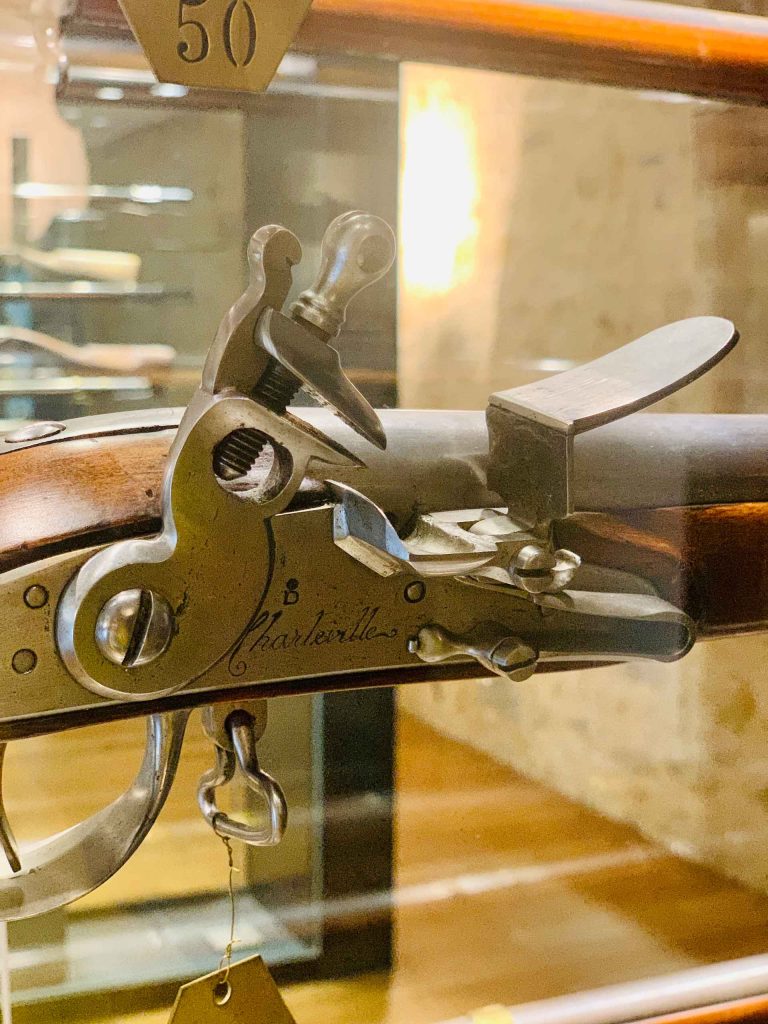
Musket type firearm
3. The history of the slate and steel industry
The Ardennes was famous for its slate and steel industries and you can still find slate as you walk around the Ardennes today. Commercial slate quarrying in Charleville had stopped by 1970 and you now need to go to Spain for your slate.
In the museum you can see some ancient drawings on pieces of slate (a prehistoric sketch pad!), showing some of the earliest known art of the region.
Alongside the history of the slate industry you can also see an impressive collection of nails and fastenings. Production of these was historically a small scale activity done by skilled blacksmiths in small workshops. The collection has more types of nails than we could have imagined existed!
4. The history of the City of Charleville
You can learn more about Charles de Gonzague, the city’s founder and look at his blueprints for the City he never got to see quite finished.
You will see some of his original designs and can see which bits he managed to complete and those he didn’t, such as his personal palace just off the Place Ducal. The spot he had put aside for this is now home to the Town Hall which though beautiful, is slightly more modest than what he had imagined.
Charles de Gonzague had dreams of creating a perfect city dedicated to trade and craft, with organised streets and beautiful buildings based around the main square, Place Ducal. Most of the city was built in a local golden honey stone and though there were parts destroyed in the first and second world war, it was largely left unscathed due to rapid German occupation in the First World War, and its low military value in World War Two.
Though Charleville was left largely unscathed, much of Mezieres across the water was destroyed after the first world war and in 1920 a group of people from Manchester in the UK helped raise money to help rebuild the city. There has been a long standing friendship between the two cities which seemed very apt. Coming from quite near Manchester myself, I was quite surprised to see the signs for the “Hôpital Manchester” in Charleville!
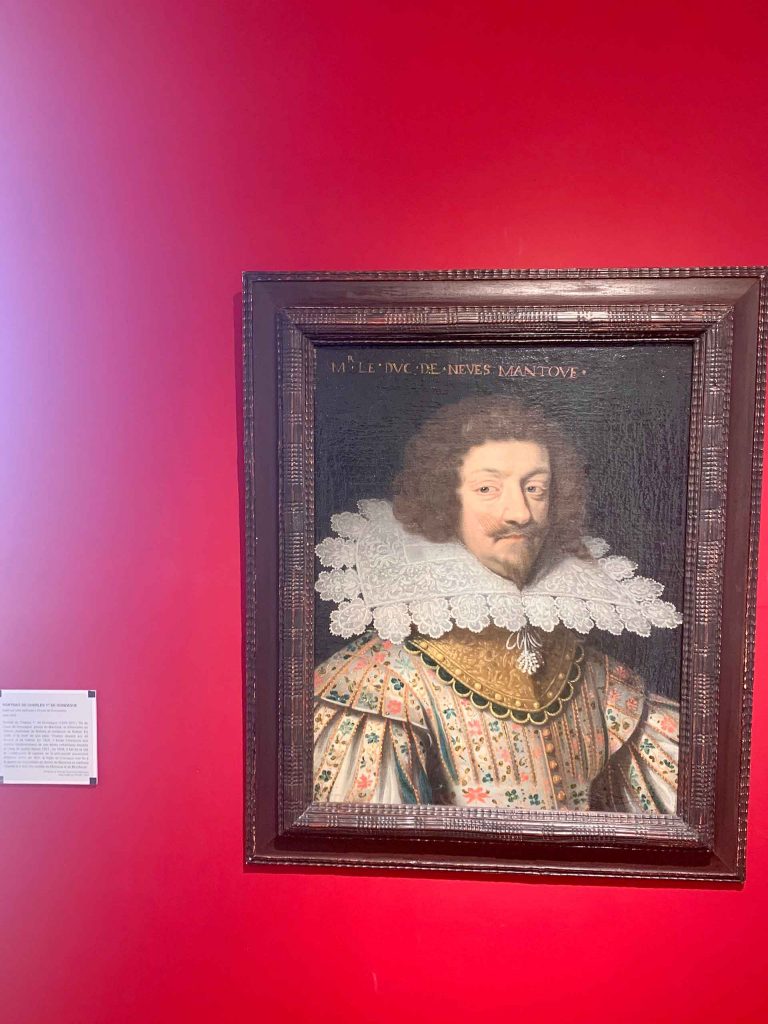
Portrait of Charles de Gonzague
5. 3D models of old paintings
The museum has had a number of portraits and paintings recreated in 3D using 3D printing. These models allow the visually impaired to feel how the paintings look. This really clever technology adds another modern and useful twist to the museum.
There’s a rumour that most Charles de Gonzague paintings were made to look a bit more handsome than he really was though, so be warned you might not be feeling a true likeness!
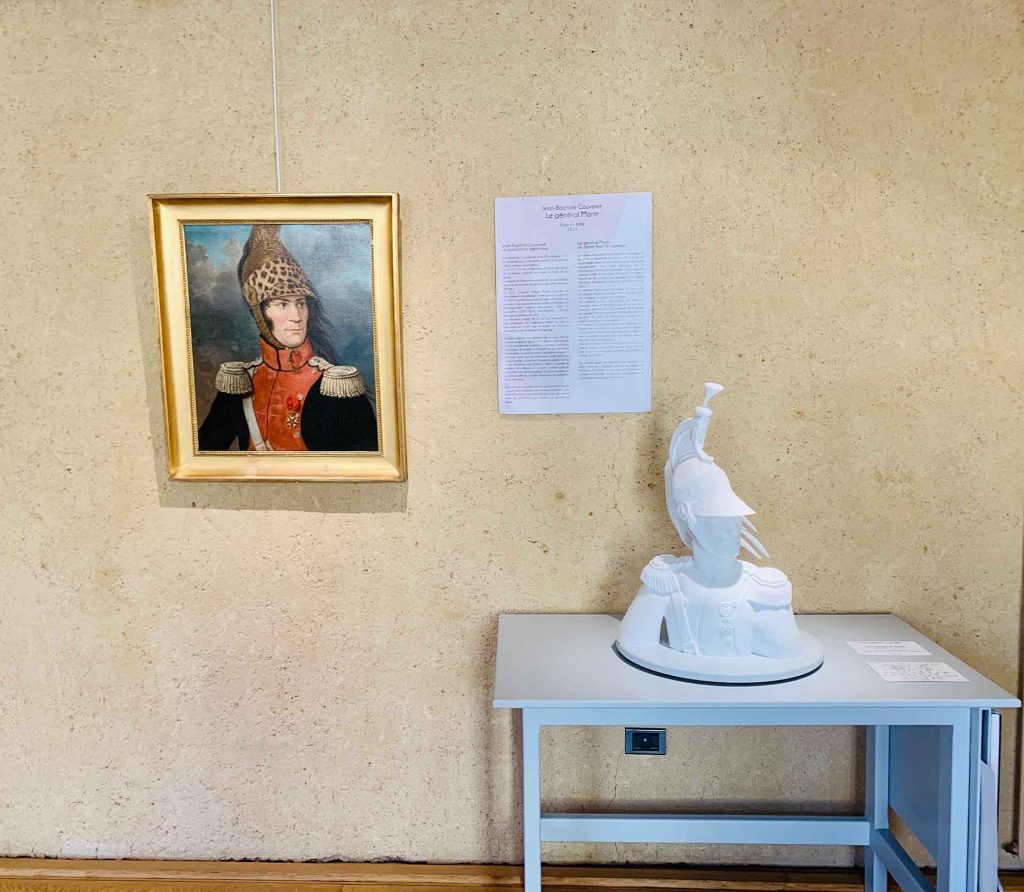
3-D representation
6. Reconstruction of an authentic Ardennes interior
As you move through the museum you will pass a range of celtic and roman glassware and moving into a slightly more modern era there is a life-size reconstruction of an authentic Ardennes interior.
This room includes pots and pans above the open fire, washing equipment, furniture, cots and trunks from the turn of the 19th Century. It really takes you back in time and you can almost imagine someone cooking over the open stove, while someone cranks the handle of an early example of a ‘washing machine’.
7. The apothecary of the old Hôtel-Dieu
The former apothecary from Hôtel-Dieu, built 1756, was recently moved in all its glory to a corner of the museum. Sitting on the original ornate wooden shelves and cupboards you will find 120 original Nevers earthenware pots, used to hold the ointments and medicines of the old apothecary.
It’s slightly surreal to see the whole interior of the shop before you in the museum, but impressive nonetheless.
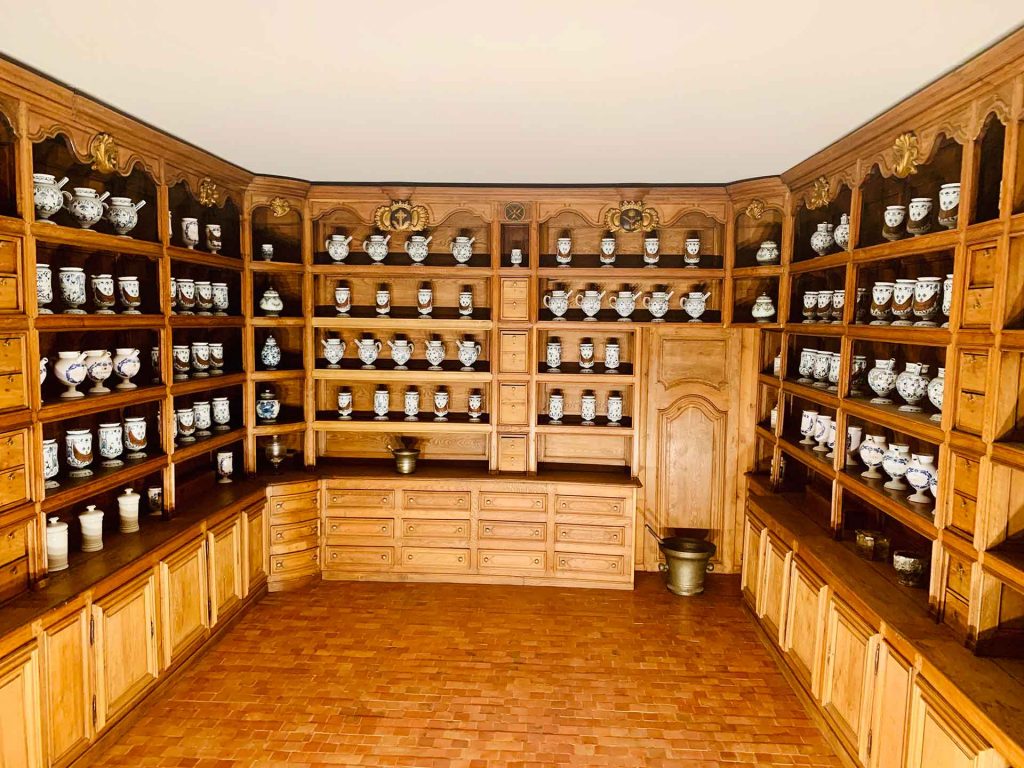
The former apothecary of the Hotel-Dieu
8. Puppets from around the world
By far the highlight of the museum for me was the amazing display of puppets they have at the museum.
Charleville has become the puppetry capital of the world, with a week-long Puppetry festival ‘Festival Mondial Marionnettes’ each year which brings puppet artists and performers from across the globe together.
The festival sees puppets of all sizes, from all backgrounds perform on the streets, in schools and all over town in a week of festivities. The population of Charleville triples in size for the week, so if you’re thinking of visiting make sure you book in advance!
If you can’t make it for the festival the museum has a huge range of puppets to view. They rotate through which puppets are on display each year so they don’t get too much exposure to the light which can start to damage the puppets, as well as to give you a chance to see something different on your next visit.
You will see puppets from Thailand, Germany, Japan and all over the world. There are puppets to tell stories about artists, fairy tales or folklore. My favourites included a series of puppets telling the story of the life of Van Gogh and another that showed the story of Snow White and the Seven Dwarves.
They also have shadow puppets and there is an interactive shadow puppet area where school children (or adults) can put on their own little display.
Alongside the normal displays that stay all year round they have special exhibitions and while we were there was a collection of puppets from UNIMA (Union International de la Marionnette or International Puppetry Association).
The exhibition showcased puppets from around the world bringing continents and cultures together. Internationalism is at the core of the organisation’s identity they aim to use puppets and performance can bring people together and create bonds between different cultures.
The puppets are a feast for the eyes in technicolour and showed me there was much more to puppets than the Sooty and Sweep I remember watching a child. Like many of the other exhibits in the museum, the puppets on display are a testament to what dedicated craftspeople can achieve.
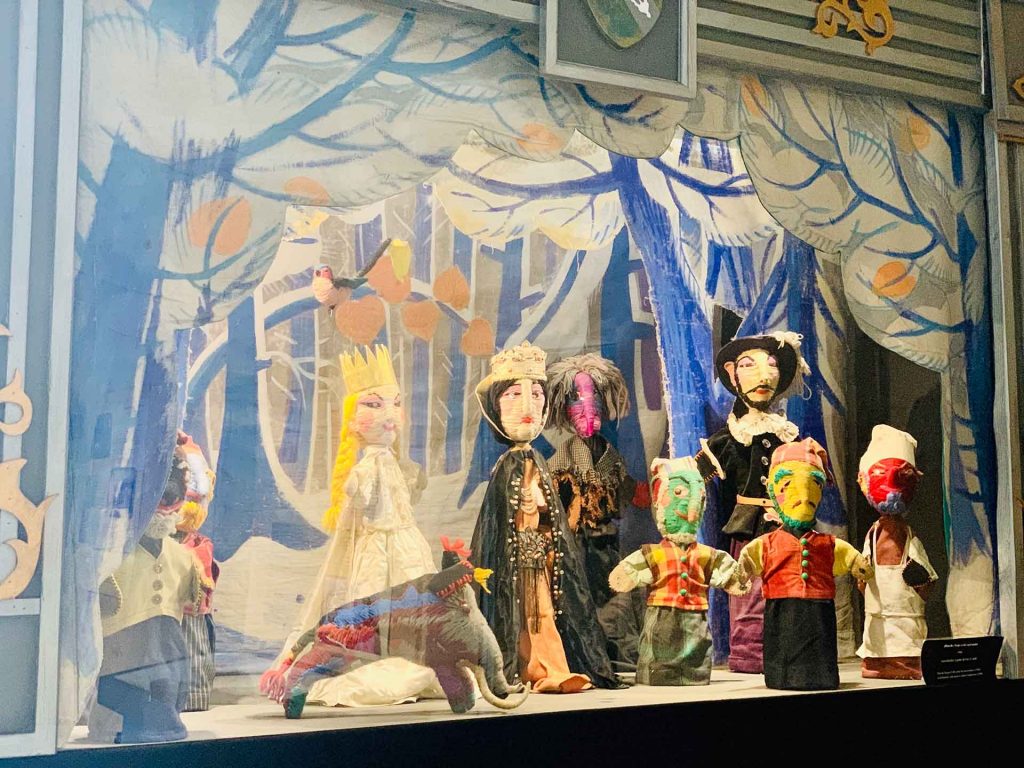
Puppet
9. Le Grand Marionnettiste (the grand puppeteer)
Le Grand Marionnettiste is one of the most famous landmarks in Charleville and puts on several performances every day all year round. He is a giant gold puppet who himself puts on a puppet show every hour, on the hour, from 10am to 9pm each day. As the clock approaches the hour, people start to gather around the grand puppeteer to watch the puppets come to life.
Each show is only a minute or two long and throughout the day tells the famous story of The Four Sons of Aymon, a medieval tale spun around the four sons of Duke Aymon and their magical horse, Bayard.
If you don’t want to come back every hour to see how the story unfolds you can watch all 10 parts of the story in a row every Saturday at 9pm.
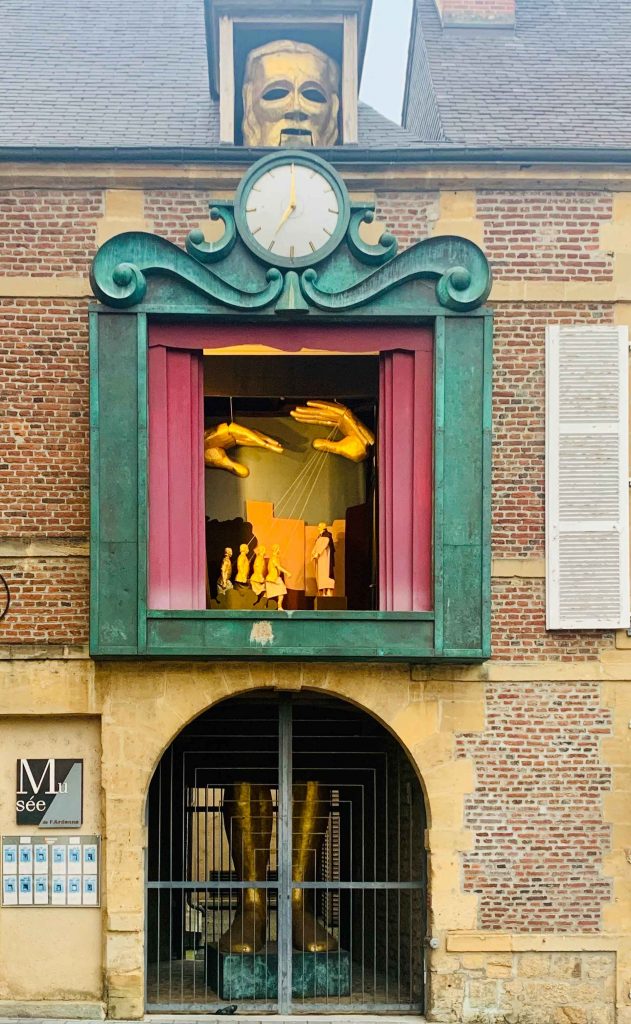
The grand puppeteer
10. Modern Art
Alongside the ancient historical artefacts and colourful puppets you will see modern art dotted around the museum.
I like the mix of old and new together and it gives the museum another unique twist. Whether it’s Wild boar sculptures, giant balls of yarn or modern architecture it brings your creative side out and the art is a feast for your imagination.
The Ardennes Museum is really well put together and offers a diverse slice of history to suit all interests. It’s well worth a visit when you’re staying in Charleville or the surrounding area.
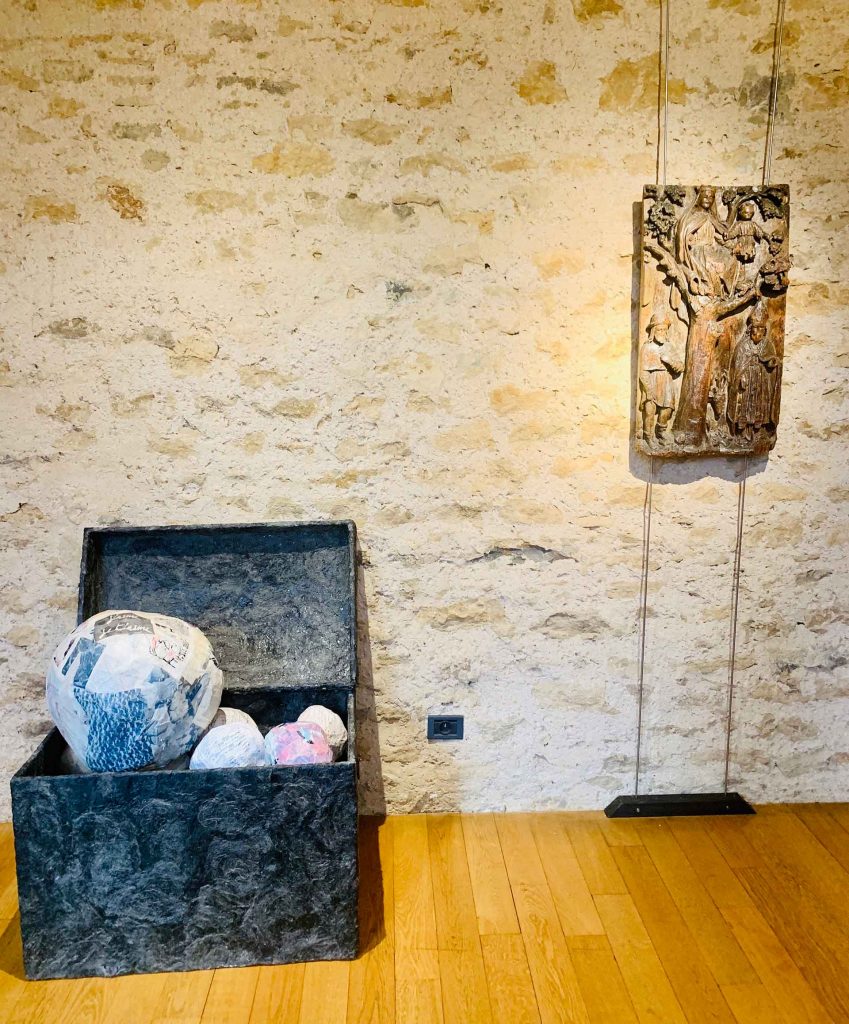
Modern Arts
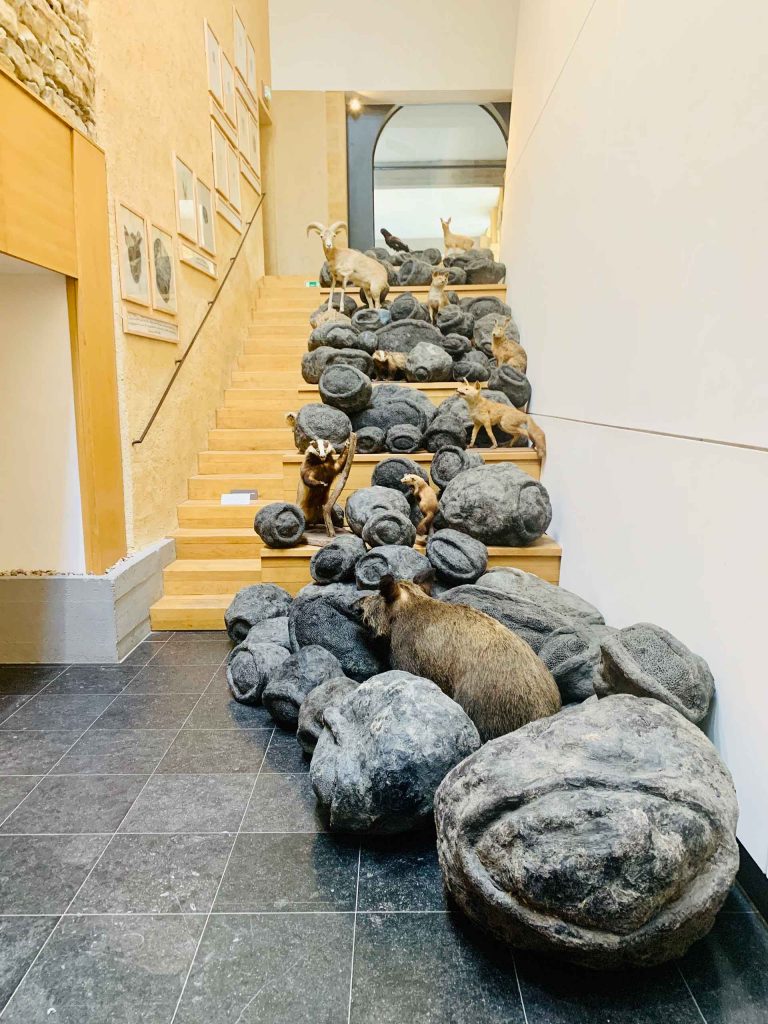
Different animals from the Ardennes



